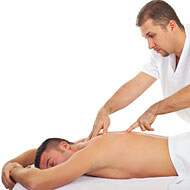Types and Benefits of Oriental Massage Therapy
Oriental massage therapy is an ancient form of massage therapy which primarily has its roots in various countries of Asia.
This technique, developed centuries ago is used predominantly to treat joint and muscle pains, reduce stress and tension, increase blood circulation, maintain a healthy, beautiful body and for general peace of mind, relaxation and comfort.
This type of massage relies upon the concept or ch’i (also called qi). Ch’iis the main fundamental principle in traditional Chinese medicine and refers to the natural invisible energy believed to be present in all things in the Universe, including the human body. When translated literally, ch’i means breath, air, or gas.
In Oriental massages, hands, fingers, elbows, knees, feet and other parts of the body are used to provide the massage treatment. There are many techniques and styles of Oriental massage therapy, but in this article we will talk about three popular types.
Types of Oriental massage therapy
● Acupressure
Acupressure is one of the most well-known techniques and needs little introduction. This ancient healing process, practiced in China and India since centuries, is achieved by using the fingers to apply pressure to various pressure points on the body. Pressing these pressure points stimulates blood circulation and provides relief from muscular tension. The pressure may be gentle or firm depending on the part of the body as well as the symptoms and treatment.
● Tui Na
Tui Na pronounced tōō·ē nä, literally means, “push and grasp”. This Chinese therapy is frequently used together with acupuncture. Unlike some other forms of massage which are taken for relaxation and rejuvenation, Tui Na is used mainly to treat pain, discomfort, other physical ailments and revive injured tissues. This sophisticated massage style is accomplished using a chair or couch. The person receiving this massage need not undress. They can be dressed in normal, comfortable clothes. Tui Na is strong, powerful and focuses only on the problem area of the body. Besides pushing and grasping, Tui Na usesforceful maneuvers like rolling, kneading and rubbing. The first time after receiving this massage, the body may ache and the person may feel sore, but this feeling usually diminishes in a couple of days. In subsequent sessions the massage becomes less painful and people who have tried it at different times on a regular basis tend to get addicted to it.
● Shiatsu
Shiatsu is an ancient Japanese massage therapy which means, “finger pressure” in Japanese.
However, in practice, different techniques like touch, comfortable pressure and other manipulative techniques are used to regulate the physical structure of the body and maintain equilibrium in its energy flow. Shiatsu can be practiced in many forms, namely Healing Shiatsu, Namikoshi Shiatsu, Zen Shiatsu, Macrobiotic Shiatsu, Movement Shiatsu and Hara Shiatsu. Some of the approaches concentrate more on the pressure points in the body, and some others aim to balance and influence the Ch’i that apparently runs in the body. Whatever be the approach, they are all nevertheless created with traditional Chinese medicine as the base. Another popular category of Shiatsu is the Five Elements Shiatsu. This approach involves diagnosis using traditional Chinese medicine as the base. This system primarily revolves around maintaining the equilibrium and interaction of the five elements - earth, fire, metal, wood and water. Each of these elements is associated with various parts of the body.
Benefits:
- Oriental massage therapy is credited with attaining several benefits to the mind and body. Besides improving the blood circulation in the body, oriental massage therapy is used to cure several health conditions like, headaches and migraines, arthritis, pre-menstrual syndromes, stress and insomnia to name just a few.
- All the various types of massage techniques vary in the method of application and each of them are good at treating specific types of conditions. For instance, all health conditions which are treated by physiotherapists and chiropractors in western countries can be effectively treated with the help of Tui Na. In fact it is considered to be most effective for treating injuries. The renowned Chinese Olympic team is an example of this. The team uses Tui Na for all their bodywork. TuiNa is found to be very effective in treating certain musculoskeletal ailments and chronic stress-related syndromes of the digestive, respiratory and reproductive systems.
- Shiatsu on the other hand is more of a relaxing therapy and is considered mainly effective for combating tension, stress and emotional problems.
- Similarly another form of oriental massage therapy, Indonesian massage (not covered in this article), is considered effective in treating stiff and sore muscles. It is also considered beneficial for treating stomach related complaints such as, constipation, indigestion, bloating, heartburn and irritable bowel syndrome.
- Even if you don’t have any health and physical problems, the oriental massage is a great way to pamper yourself and rejuvenate the mind body.



